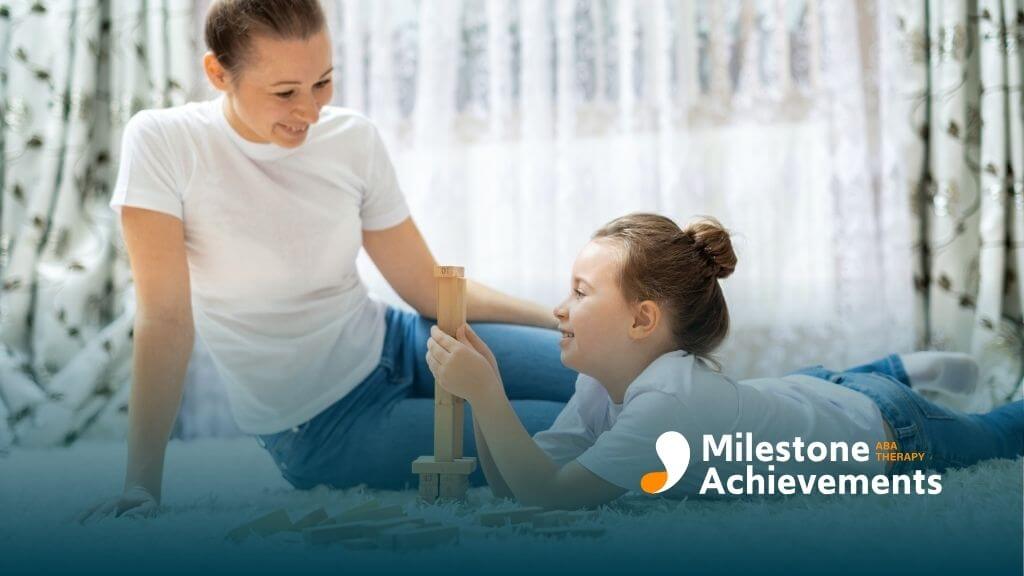
Clothes For Children With Autism
Enhancing Comfort and Independence Through Adaptive Clothing
Understanding the Significance of Clothing for Children with Autism
Clothing plays a vital role in the daily comfort, sensory regulation, and independence of children with autism. Adaptive and sensory-friendly apparel are specially designed to address the unique needs of these children, minimizing discomfort and enabling easier dressing routines. This article explores various aspects of autism-friendly clothing, highlighting innovative features, popular options, and trusted brands dedicated to supporting children with sensory sensitivities.
What Is Autism-Friendly Clothing?

What is autism-friendly clothing?
Autism-friendly clothing, also known as sensory-friendly apparel, is uniquely designed to meet the sensory needs of children with autism. These garments aim to create a comfortable and calming experience for children who often experience sensory processing difficulties.
Use of soft, itch-free fabrics like organic cotton and bamboo
The fabrics used in autism-friendly clothing are typically soft, lightweight, and gentle on the skin. Materials such as organic cotton, bamboo, and nylon spandex are common choices. These fabrics are not only durable and moisture-wicking but also help reduce skin irritation, which is crucial for children with heightened sensory sensitivities.
Seamless and label-free designs to reduce tactile irritations
Many of these garments are designed without seams or labels, preventing common sources of tactile discomfort. Seams can cause itching or pressure points, especially for children with autism who have heightened tactile sensitivities. Labels, often a source of irritation, are replaced with printed tags or eliminated altogether.
Features such as compression, deep pressure, and weighted elements
To aid sensory regulation, autism-friendly clothing often includes features like compression fabric, which provides gentle pressure to help calm the nervous system. Weighted elements, such as vests or shoulder pillows, mimic the calming effects of deep pressure therapy, helping children feel secure and relaxed. These features can improve focus, reduce anxiety, and prevent overstimulation.
Purpose: To promote comfort, sensory regulation, and reduce overstimulation
The primary goal of these garments is to enhance comfort and support sensory processing. By offering clothing that reduces tactile discomfort and incorporates calming sensory inputs, children with autism can engage more calmly in daily activities. This apparel supports independence and boosts confidence, allowing children to participate comfortably in school, home, and social settings.
Brands and examples
Several brands, including Kozie Clothes, SmartKnitKIDS, and Tommy Hilfiger’s adaptive line, produce autism-friendly clothing featuring soft fabrics, seamless designs, and sensory integration elements. These products range from basics like socks and underwear to specialized items like weighted vests and compression shirts.
| Brand | Notable Features | Available Products | Certifications |
|---|---|---|---|
| Kozie Clothes | Comfort-focused, sensory-friendly fabrics | Bodysuits, vests, accessories | US-made, standards-compliant |
| SmartKnitKIDS | Seamless, irritation-free materials | Socks, underwear, compression garments | OEKO-TEX Standard 100 |
| Target (Cat & Jack) | Tagless, soft materials, adaptive closures | Shirts, pants, accessories | - |
| Tommy Hilfiger | Magnetic closures, adjustable fit | Shirts, jackets, pants | - |
Why is autism-friendly clothing important?
Children with autism often face challenges with uncomfortable clothing that can cause distress or overstimulation. When clothing is designed to remove irritants like tags, seams, and rough fabrics, it significantly reduces discomfort.
Plus, features like compression or weighted components can provide sensory input that helps children feel more grounded and less anxious. This clothing supports the goal of fostering independence, enabling children to dress and undress with ease, and participate more fully in everyday life.
Resources and shopping options
In addition to specialized brands, mainstream stores like Kohl’s and Target now include adaptive clothing lines that feature tagless labels, flat seams, and easy fastenings. Online platforms, including Amazon and Fun and Function, offer a wide array of sensory clothing options for children of all ages. Many of these products adhere to safety standards like OEKO-TEX, ensuring they are safe and environmentally friendly.
This focus on comfort, sensory regulation, and independence makes autism-friendly clothing an essential part of supporting children with autism in everyday life.
Preferences and Comfort: What Do Autistic Children Prefer to Wear?

What do autistic children prefer to wear?
Autistic children often have specific clothing preferences driven by sensory sensitivities and comfort needs. They generally favor soft, natural fabrics such as cotton, silk, satin, and lightweight denim. These materials are gentle on the skin and help reduce irritation, providing a more comfortable experience.
Many children prefer loose-fitting garments that do not restrict movement. Wearing such clothing allows ease of motion and can help prevent sensory overload or discomfort caused by tight or restrictive clothing. Adaptations like seamless shirts, pants, and bodysuits are especially popular because they lessen tactile irritation from seams and tags.
Minimizing tactile stimuli is also achieved through clothing with soft, flat seams and removable tags. Seamless clothing options—produced by brands such as SmartKnitKIDS and Calm Wear—are designed to prevent scratching and itching, which can be distressing for sensitive children.
Color choices play a significant role in comfort. Children with autism often prefer muted, solid tones over bright colors or busy patterns. Simple, calm hues help reduce visual stimulation and prevent overstimulation that could lead to meltdowns.
Furthermore, wearable sensory tools like weighted vests or 'hug' shirts offer calming pressure that can help regulate sensory input. These products provide proprioceptive feedback, which many children find soothing during stressful moments or sensory overload.
Identifying individual preferences typically involves a trial-and-error process. Each child’s sensory profile is unique; some may prefer certain fabrics or styles over others. Caregivers, therapists, and clothing brands working with children on the autism spectrum often recommend testing different textures, fits, and features to discover what promotes comfort and confidence.
In summary, clothing for children with autism should prioritize softness, flexibility, and sensory-friendly design. Appropriate fabric choices and thoughtful features can significantly improve daily comfort, independence, and emotional well-being.
Adaptive Clothing Options for Children with Special Needs

What are some adaptive clothing options for children with special needs?
Adaptive clothing provides essential solutions for children with various medical, sensory, and developmental needs. These garments are designed to enhance independence, comfort, and safety during dressing and daily activities.
One common feature in adaptive clothing is the use of easy access designs. For example, clothing with elastic waistbands and large zippers allows children to dress and undress more independently. Wrap styles, adjustable drawstrings, and zipper back closures are also popular, facilitating easier dressing and handling medical procedures.
The range of adaptive clothing includes an array of essential items such as bodysuits, vests, jumpsuits, and sleepsuits. Many of these have functional features like double-button lock systems, longer legs or sleeves, and discreet, accessible openings to accommodate feeding tubes, IVs, or other medical needs.
Sensory-friendly clothing and accessories are vital for children with sensory processing issues. Products such as wheelchair covers, weighted shoulder pillows, calming bags, and chewies help regulate stimuli and provide calming pressure, supporting children in managing overstimulation.
Materials used are often soft, seamless, and itch-free to prevent discomfort. Fabrics like nylon spandex are common for compression products because they are durable, lightweight, breathable, and moisture-wicking, which supports sensory input and keeps children comfortable.
Size options span from toddlers to teenagers, supporting children aged approximately 2 to 16 years. This range ensures proper fitting and functional support across different stages of growth and development.
Clothing with easy access features like elastic waistbands and large zippers
Adaptive clothing generally features elastic waistbands and large, easy-to-manipulate zippers, making dressing safer and more independent. These features are especially helpful for children with limited mobility or those who find fine motor tasks challenging.
Range includes bodysuits, vests, jumpsuits, and sleepsuits
From snug bodysuits for infants to loose-fitting jumpsuits and vests suitable for older kids, the variety aligns with individual needs. Many items are designed for easy dressing with features such as snap buttons and magnetic closures.
Use of sensory features and accessories like wheelchair covers, chewies
Sensory features include soft fabrics, tagless labels, flat seams, and adaptive accessories like wheelchair covers that protect and comfort children during daily activities. Chewies support oral sensory needs, and weighted vests or shoulder pillows provide calming input.
Materials that support sensory needs, soft and comfortable
Clothing made from high-quality, soft, and stretchable fabrics offers comfort for children with heightened sensitivities. Seamless designs and non-irritating textures help reduce discomfort and enhance wearability.
Size options supporting children from age 2 to 16
Adaptive clothing brands ensure a wide range of sizes, from toddler to teenage years. This accommodates children with different body types and growth stages, fostering independence and confidence.
| Feature | Description | Supporting Needs |
|---|---|---|
| Easy Access Design | Zippers, elastic waistbands, and wrap styles | Limited mobility, medical access needs |
| Product Range | Bodysuits, vests, jumpsuits, sleepsuits | Comfort, daily wear, medical routines |
| Sensory Solutions | Wheelchair covers, weighted accessories, chewies | Sensory processing sensitivities |
| Fabric Types | Nylon spandex, organic cotton, seamless, soft fabrics | Comfort, sensory regulation |
| Size Range | 2 to 16 years | Growth accommodation |
Brands like Kozie Clothes, Target's Cat & Jack Adaptive, and SmartKnitKIDS exemplify these standards. They offer clothing that integrates comfort, accessibility, and safety, providing children with the tools they need to thrive in daily life while accommodating their unique sensory and physical needs.
Popular Outfits and Styles for Children with Autism

What are popular outfits for children with autism?
Children with autism often benefit from clothing choices that prioritize comfort and sensory friendliness. Soft knit fabrics are a popular choice, especially for dresses and leggings, as they are gentle against sensitive skin. Harem pants and tunics made from stretchy, elastic waistbands provide ease of movement and comfort. These clothing options eliminate the discomfort caused by tags, seams, and restrictive designs, which can lead to sensory overload and frustration.
Clothing styles that promote ease of dressing and undressing are preferred. For example, zippered fronts, snap closures, and Velcro fasteners are practical, making the process simpler for both children and caregivers. These adaptive features reduce the need for complex buttoning or tying, which can be challenging for children with sensory processing issues.
How can visual supports and social stories assist?
Using visual supports such as picture charts and social stories can significantly boost independence in dressing. Visual supports help children understand the sequence of dressing steps, making routines predictable and less intimidating. This approach fosters confidence and a sense of control, encouraging children to participate actively in choosing and dressing themselves.
Implementing a consistent routine using visual supports reduces anxiety related to dressing, while also helping children develop fine motor skills and independence.
What clothing features are beneficial for children with autism?
Innovative clothing options incorporate adaptive features that cater to children with autism’s specific needs. Tagless shirts, for example, eliminate the irritation caused by tags often associated with sensory sensitivities.
Fasteners such as Velcro or magnetic closures simplify dressing and undressing, especially for children with limited fine motor skills. Adjustable waistbands and stretchable fabrics ensure a comfortable fit for different body shapes, promoting ease and comfort.
Weighted garments like vests and shoulder pillows can provide calming deep pressure, helping to regulate sensory input. Some clothing brands also offer seamless, itch-free fabrics that prevent skin irritation.
How involving children in clothing choices enhances confidence?
Empowering children to participate in selecting their outfits fosters independence and confidence. Allowing them to pick from pre-selected options or giving choices within a set of comfortable clothing encourages autonomy.
Planning outfits in advance reduces morning stress and helps children develop routine and organization skills. Additionally, positive reinforcement and praising their involvement reinforce cooperation and make dressing a positive experience.
Additional Considerations and Trends
Recent trends in adaptive clothing include the use of modern designs that are non-stigmatizing. Many brands now feature plain, neutral colors and minimal embellishments, making clothing more appealing and socially acceptable.
Some garments also incorporate sensory-friendly materials like organic cotton and nylon spandex blends, which are durable, breathable, and moisture-wicking. These fabrics support sensory regulation and maintain comfort throughout the day.
In conclusion, the emphasis for dressing children with autism is on comfort, accessibility, and sensory considerations. By choosing outfits with thoughtful features such as seamless construction, adaptive fasteners, and calming textures, caregivers can improve daily routines. Involving children in the process further boosts their confidence, independence, and overall well-being.
| Clothing Type | Features | Benefits | Suitable For |
|---|---|---|---|
| Soft knit dresses | Stretchy, tagless, seamless | Comfort, sensory friendliness | All children with sensory sensitivities |
| Leggings & harem pants | Elastic waistbands, breathable fabrics | Ease of dressing, mobility | Younger children, those with limited mobility |
| Tunics | Loose fit, soft fabric, easy to wear | Comfort, independence | Older children and teens |
| Adaptive shirts and bodysuits | Velcro, magnetic closures, tagless | Convenience, sensory comfort | Children with fine motor challenges |
| Weighted vests & accessories | Deep pressure, calming | Self-regulation of sensory input | Children with sensory processing disorder |
This combination of comfort, adaptive features, and involving children in clothing choices helps create a positive dressing experience. It also fosters independence, confidence, and a better sense of control over daily routines.
Choosing the Best Clothing for Children with Autism

What are the best clothes for children with autism?
Selecting clothing for children with autism requires understanding their unique sensory sensitivities and needs. The best options are those that are sensory-friendly and specifically designed to reduce discomfort while supporting independence.
Clothing that fits this description often features soft, seamless, and tagless fabrics to prevent skin irritation and sensory overload. These garments are made from durable, breathable, and moisture-wicking materials like nylon spandex, which supports comfort throughout the day.
Items such as compression shirts, vests, and bodysuits are popular because they offer calming deep pressure input that helps regulate sensory processing difficulties. For example, weighted vests and compression shirts from brands like Kozie Clothes and others can provide soothing sensory input, helping children stay calm and focused.
Adaptive clothing lines also include convenient features such as elastic or adjustable waistbands, easy zipper or snap closures, and styles that support medical needs like feeding tube access or incontinence management. These features are essential for facilitating independence and reducing frustration during dressing routines.
Many clothing providers emphasize functional, non-stigmatizing designs—plain, neutral colors without loud patterns or logos—ensuring children feel comfortable and confident. Accessories like sensory calming bags or weighted shoulder pillows further enhance sensory regulation.
Use of soft, tagless, seamless, and breathable fabrics
The choice of fabric plays a critical role in sensory-friendly clothing. Soft, seamless, and tagless garments eliminate common irritants like itchy labels or scratchy seams. Breathable fabrics such as organic cotton, high-quality nylon spandex, and other hypoallergenic materials support temperature regulation and moisture management. This reduces skin irritation and promotes comfort, especially important for children with heightened sensory sensitivities.
Clothing brands like SmartKnitKIDS focus exclusively on seamless socks and underwear, catering to hyper-sensitive children. These products are designed to prevent any binding or uncomfortable indentations, further minimizing sensory discomfort.
Items like compression shirts, vests, bodysuits with calming features
Compression clothing like shirts, vests, and bodysuits can provide calming input through gentle pressure. Weighted products, such as vests and shoulder pillows, help in calming overstimulation and promoting focus.
Official providers like Kozie Clothes offer a range of such products—including weighted vests and compression shirts—in plain, non-stigmatizing styles suitable for children with autism. These items are crafted from stretchable, soft fabrics that support movement and sensory regulation.
Bodysuits with snap buttons, like those from Calm Wear, facilitate easy diaper changes and offer full coverage, reducing the likelihood of children removing their clothes inappropriately. Such designs improve independence while maintaining comfort.
Brands and providers like Kozie Clothes, Target, and others
Several reputable brands have developed adaptive clothing specifically for children with autism and other sensory needs. Kozie Clothes, made in the USA and meeting strict safety standards, emphasizes sensory-friendly, calming designs with features like reversible, tagless, and seamless garments.
Target's Cat & Jack Adaptive line offers a variety of sensory-conscious options, including clothes with flat seams, tagless labels, and easy-fastening closures such as zippers and snap buttons. These clothes combine traditional style with practicality and comfort.
Other notable options include Tommys Hilfiger’s Adaptive line, featuring magnetic closures and adjustable ones, and BILLY Footwear that specializes in easy-on shoes with zipper systems for children with mobility challenges.
Providers like Fun and Function and SmartKnitKIDS offer extra features such as weighted clothing, compression gear, and seamless socks that accommodate sensory sensitivities.
Clothing that minimizes sensory overload, facilitates movement, and provides calming sensory input
The main goal of sensory and adaptive clothing is to create a calming environment while supporting functional movement. This is achieved by
- using calming, soft fabrics;
- designing without tags or irritating seams;
- incorporating adjustable and accessible fastenings;
- including weighted or compression elements to provide calming sensory input.
Clothing that minimizes overstimulation helps children focus on their activities and feel more in control. For example, sensory-friendly accessories such as weighted shoulder pillows, calming bags, and adjustable compression garments can assist in maintaining a sense of calm.
By choosing clothing that balances comfort, functionality, and sensory needs, caregivers can significantly improve daily routines and well-being for children with autism.
| Brand/Provider | Product Types | Special Features | Target Age Range |
|---|---|---|---|
| Kozie Clothes | Bodysuits, vests, compression shirts | Made in USA, sensory-friendly, calming features | Toddlers to teens |
| Target (Cat & Jack) | Shirts, pants, closures, accessories | Tagless labels, flat seams, easy fastenings | All ages |
| SmartKnitKIDS | Socks, underwear | Seamless, hypoallergenic, irritation-free | Infants to children |
| Tommys Hilfiger | Clothing with magnetic closures | Adjustable, easy to use fasteners | All ages |
| BILLY Footwear | Shoes | Zipper system, easy to put on/off | Children with mobility needs |
| Fun and Function | Sensory clothing, weighted gear | Calming features, sensory input support | Children with autism |
This selection reflects the variety and specificity of adaptive clothing designed to meet the sensory and medical needs of children with autism, promoting comfort, independence, and confidence.
Supporting Autistic Children Through Thoughtfully Designed Clothing
Clothing tailored for children with autism and sensory processing needs plays a crucial role in their comfort, independence, and emotional well-being. Innovative features, high-quality soft fabrics, and adaptive designs are vital in creating garments that not only accommodate sensory sensitivities but also enable children to engage confidently in daily activities. Recognized brands like Kozie Clothes, Target, and others are leading the way by offering functional, stylish, and sensory-friendly options that align with the latest understanding of sensory needs. As awareness grows, so does the availability of clothing that promotes comfort, sensory regulation, and independence, ultimately fostering a more inclusive and supportive environment for children with autism.
References
- Adaptive Clothing for Children | Special Kids
- Sensory and Adaptive Clothing for Kids | Kozie Clothes | Sensory ...
- Super soft sensory-friendly clothing without tactile seams or labels
- Best Autism Apparels for Kids on the Spectrum
- Special Needs Clothing | Adaptive Clothing & Accessories for ...
- Special Needs Clothing - Amazon.com
- Autism-Friendly Clothing Brands for Back to School - Kid PT
- Sensory Friendly Fabrics For Children With ASD | ART


Partner with us on your child's journey
Milestone Achievements offers evidence-based ABA therapy to help children with autism reach their full potential. Together we’ll set meaningful goals and celebrate progress every step of the way.
Start ABA Services Today





